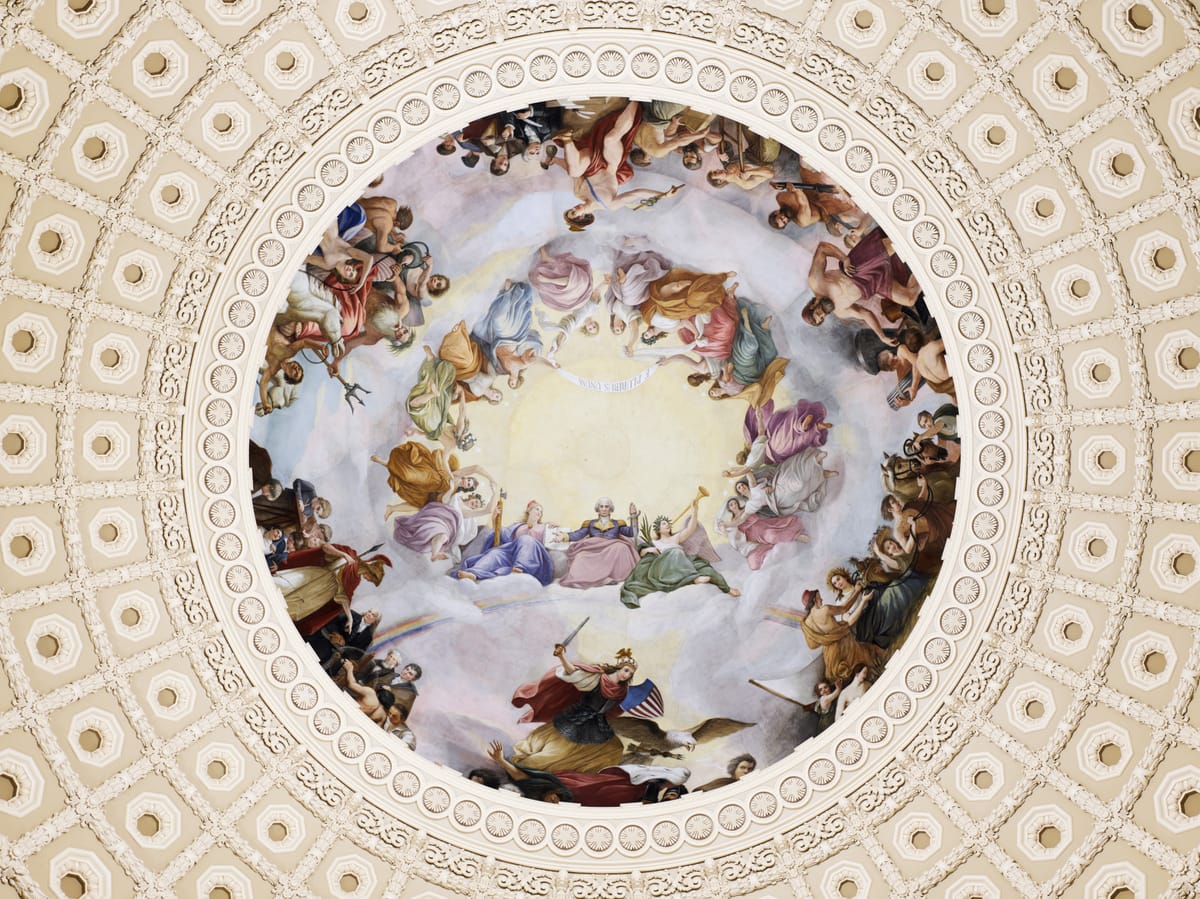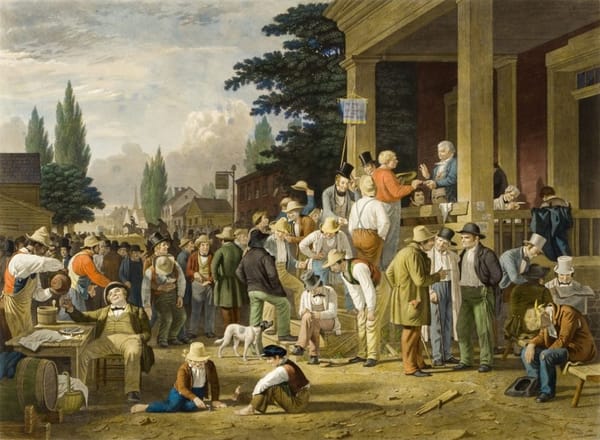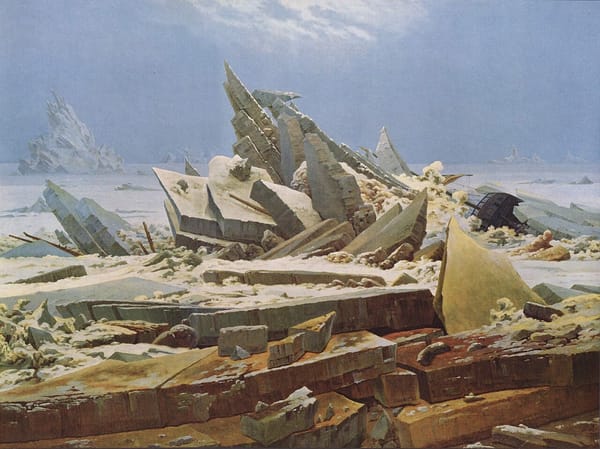The Civic Arts of Healing Democracy: Contact, Imagination, Humility
America is splitting not over ideas, but over identities. The cure is older than we think: contact that dissolves caricature, imagination that widens the circle, humility that tempers certainty.

Democracy is not designed to erase discord. It is designed to civilize it—to turn the raw energy of disagreement into compromise, to transform rivalry into renewal. For most of its history, the American republic managed this balancing act with remarkable resilience. But in recent years the machinery has faltered. Disagreement has hardened into disdain. Rivals are not merely wrong but wicked, neighbors not simply mistaken but malevolent.
The result is a pervasive exhaustion. Families splinter over elections. Long friendships collapse after a few inflammatory posts online. In towns across the country, once-ordinary citizens fall under the spell of political “messiahs,” persuaded by a handful of algorithm-fed articles that they have discovered the truth while the rest of the world sleeps..
For much of the twentieth century, American politics was less an ideological battlefield than a pragmatic exchange among overlapping coalitions. Conservative Democrats dominated the South, liberal Republicans held the Northeast, and both parties contained factions broad enough to allow transactional bargains. That arrangement began to unravel after the 1960s, as the Civil Rights Act, Vietnam, and the cultural revolutions of the era triggered a slow but decisive partisan realignment. Ideological sorting sharpened, and by the early twenty-first century the parties had become far more homogeneous in their outlooks.
Yet the sharper policy divides, serious as they are, are not the most corrosive change. More dangerous is the rise of what political scientists call 'affective polarization'
Yet the sharper policy divides, serious as they are, are not the most corrosive change. More dangerous is the rise of what political scientists call affective polarization: a shift from disagreeing with an opponent’s positions to disdaining their character and distrusting them as a group. Shanto Iyengar and his colleagues have shown that Americans now “increasingly dislike, even loathe, their opponents” (Affect, Not Ideology, 2012). The evidence is striking. Using the long-running “feeling thermometer” surveys of the American National Election Studies, researchers found that warmth toward one’s own party has stayed steady for decades, while coldness toward the other party has plummeted since the 1990s. As Iyengar and Westwood explain, partisans now impute negative moral traits to ordinary members of the opposing party, not just to politicians or elites: Republicans and Democrats alike see their rivals as “hypocritical, selfish, and closed-minded” (Iyengar & Westwood, American Journal of Political Science, 2015).
As Iyengar and Westwood explain, partisans now impute negative moral traits to ordinary members of the opposing party, not just to politicians or elites: Republicans and Democrats alike see their rivals as “hypocritical, selfish, and closed-minded”
This is not mere disagreement over issues. It is tribal animosity—a politics of identity in which the out-party is no longer a rival to debate but an enemy to shun. The civic fabric frays because we are learning to see the other half of the electorate as alien, immoral, even dangerous. Yet even this finding has nuance. Scholars like Druckman and Levendusky caution that when asked to rate “Republicans” or “Democrats,” many respondents are thinking of political elites, not ordinary voters. In fact, many Americans express less animosity toward their out-party neighbors than toward out-party leaders. The paradox is clear: our anger is real, but perhaps more elite-driven than we admit.
Two powerful forces explain how polarization seeped into everyday life. The first is geographic. As journalist Bill Bishop argued in The Big Sort, Americans have been quietly clustering into like-minded enclaves for decades. The country is more diverse from coast to coast, but within communities it is alarmingly homogenous. “We have cleansed our personal spaces of heretics,” Bishop warned, “and removed the grit that makes democracy possible.”
The country is more diverse from coast to coast, but within communities it is alarmingly homogenous.
The second is digital. Online platforms, designed to maximize engagement, radicalize by degrees. Zeynep Tufekci described YouTube’s algorithm as “one of the most powerful radicalizing instruments of the 21st century.” “Videos about jogging led to ultramarathons,” she noted. “Vegetarianism led to veganism.” In politics, it is outrage and conspiracy that keep viewers hooked. Curiosity becomes conviction; conviction hardens into zeal.
Online platforms, designed to maximize engagement, radicalize by degrees.
Why, then, is this spiral of hostility so resistant to reversal? Psychology offers clues. Jonathan Haidt, in The Righteous Mind (2012), demonstrates that liberals and conservatives do not merely disagree on priorities but operate on different moral registers. Liberals emphasize care, fairness, and liberty; conservatives also draw deeply on loyalty, authority, and sanctity. Each side speaks a moral dialect the other scarcely understands. George Lakoff, in Moral Politics (2002), sharpens this point: political worldviews are rooted in contrasting family metaphors. Conservatives tend to see society through the “strict father” model, stressing discipline, hierarchy, and moral order; liberals, through the “nurturant parent,” emphasizing empathy, fairness, and protection from harm. These frames are not rhetorical ornaments but deep cognitive structures that shape how facts themselves are received. Arlie Hochschild, in Strangers in Their Own Land (2016), captures the emotional narrative that animates many on the right: the “deep story” of waiting one’s turn in line for the American dream, only to see others—immigrants, minorities, or those favored by government programs—cut ahead with official sanction. This story is not statistical but existential, rooted in honor, betrayal, and loss. Cognitive scientists Steven Sloman and Philip Fernbach, in The Knowledge Illusion (2017), push the insight further: most of what we think we know is borrowed from our community. Human cognition is communal; to abandon a belief is not merely to revise an opinion but to risk exile from the very group that grants identity.
Human cognition is communal; to abandon a belief is not merely to revise an opinion but to risk exile from the very group that grants identity.
Taken together, these perspectives explain why facts so often bounce off and why “debunking” entrenches rather than persuades. The battlefield is not fought in the realm of evidence but in the realm of belonging.
The battlefield is not fought in the realm of evidence but in the realm of belonging.
What, then, would it take to recover a politics of coexistence? Here the disciplines of social science, peacebuilding, and philosophy converge on three indispensable insights.
First, contact matters. Gordon Allport, a Harvard psychologist writing in the aftermath of World War II, argued in The Nature of Prejudice (1954) that hostility between groups can diminish when people meet under the right conditions: as equals, pursuing shared goals, and with the support of social norms and institutions. This “contact hypothesis” was tested in the crucible of the Civil Rights Movement and remains the foundation of most modern efforts to reduce prejudice, from school integration to interfaith dialogue.
Second, imagination matters. John Paul Lederach, one of the most influential peacebuilders of the late twentieth century, spent decades mediating in Central America, Africa, and Asia. In The Moral Imagination (2005), he argued that peace is not merely the absence of conflict but the creative act of envisioning oneself in webs of relationship that include even one’s enemies. The task of peacemaking is not technical but artistic: to cultivate paradoxical curiosity, spaces for creativity, and the courage to step into the unknown.
And third, humility matters. Isaiah Berlin, the great Oxford political philosopher, developed the doctrine of “value pluralism.” In essays such as “Two Concepts of Liberty” (1958), he argued that human goods—justice and mercy, liberty and equality, loyalty and truth—are all real, but often irreducibly in conflict. No single ideology can harmonize them without distortion. To live freely is to accept tragic choice, to balance goods in tension, and to resist the temptation of utopian certainty.
These three insights—contact, imagination, humility—are not abstractions. They already shape promising models in American civic life. Braver Angels hosts structured dialogues where conservatives and progressives replace caricature with recognition. James Fishkin’s deliberative polling demonstrates that when citizens are given balanced information and the chance to deliberate together, they reliably move toward more nuanced, less polarized judgments. And in Congress, the Problem Solvers Caucus shows that bipartisan coalitions can still move legislation when institutional rules reward cooperation rather than grandstanding.
None of these initiatives will resolve polarization outright. But taken together, they sketch the outline of a civic ecosystem: interpersonal trust through contact, imaginative transformation of relationships, and institutional reforms guided by humility about our own truths.
None of these initiatives will resolve polarization outright. But taken together, they sketch the outline of a civic ecosystem: interpersonal trust through contact, imaginative transformation of relationships, and institutional reforms guided by humility about our own truths.
What is required above all is a change of spirit. Democracy cannot be repaired by technocracy alone. It demands civic artistry—the cultivation of humility, imagination, restraint. Leaders must model pluralism by acknowledging not only their own truths but also the cautions offered by their adversaries. Citizens must relearn how to live with friction, how to endure difference without despair.
Cicero, facing the collapse of the Roman Republic, sought concordia ordinum—a peace among the orders. He did not imagine a society free of conflict but one capable of transmuting discord into cooperation. America’s task today is similar: to rediscover concordia discors, a harmony that arises not from sameness but from difference sustained.
America’s task today is similar: to rediscover concordia discors, a harmony that arises not from sameness but from difference sustained.
The great unraveling of American trust is real. But it need not be terminal. If citizens and leaders alike can recover the humility of Berlin’s pluralism, the moral imagination of Lederach and the disciplined courage of social movement such as civil rights movement, democracy can once again turn discord into life rather than death. Conflict will remain, as it must. But it can once again become the lifeblood of freedom rather than its undoing.
Conflict will remain, as it must. But it can once again become the lifeblood of freedom rather than its undoing.





